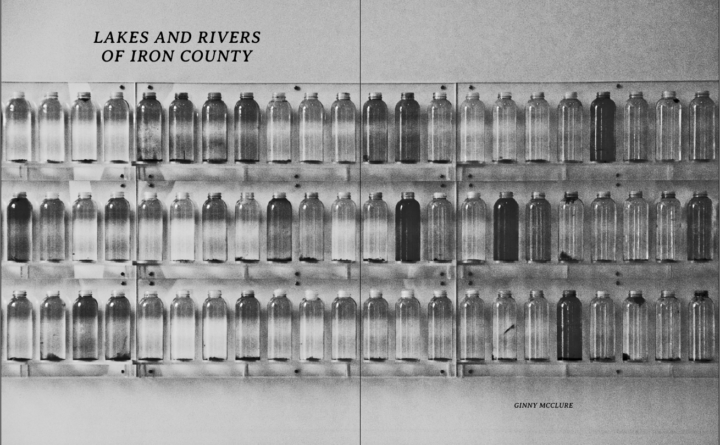
Farmer’s almanacs, yearly compendiums of weather predictions, astrological calendars and more, have long been a fixture of rural New England life. The Old Farmer’s Almanac and Farmer’s Almanac have been printed for centuries out of New Hampshire and Maine.
The New Farmer’s Almanac honors that geographic legacy — the group that puts the book together is based in Maine, and the almanac is published out of Vermont — but it looks a little different from its predecessors. Instead of weather forecasts and planting charts, the New Farmer’s Almanac is filled with essays, stories and art from a diverse array of farmers across the country.
Severine von Tscharner Fleming, who owns Smithereen Farm in Pembroke, was in San Francisco when she came across archived copies of the Poor Richard’s Almanac, Benjamin Franklin’s publication that ran for two decades in the mid-1700s and is often considered the progenitor of the almanac form. Between the weather predictions and humorous anecdotes, von Tscharner Fleming was struck by the quietly subversive nature of Franklin’s publication.
“It was a pretty political form at the time,” she recalled. “[Benjamin Franklin] was essentially radicalizing the farmers in this colonial nation to think about their own sovereignty and relate that to the sovereignty to the nation.”
The Old Farmer’s Almanac and Farmer’s Almanac are still in print, but von Tscharner Fleming started thinking about how to update the almanac for the modern farming community while embracing the radically communitarian spirit of the form. “The whole question of having a literary platform within the farming community, actually by farmers, seemed really good,” she said.
Von Tscharner Fleming is a member of the Greenhorns, a Maine-based organization that started in 2008 to attract a new generation of farmers to the profession. Their outreach efforts include holding workshops, making documentary films, blogging and hosting a radio show.
“We’ve essentially just gone along from one thing to the next whatever the form is to capture the voice and the spirit of the young farmers,” von Tscharner Fleming explained, “and then we were approached by a publishing company that wanted to do a publish young farmer stories.”
That publisher was New England-based Chelsea Green, and with their support along with the Greenhorns’s connections to the farming community, the biannual New Farmer’s Almanac was born. Von Tscharner Fleming stepped up as its editor in chief, and the first volume was published in 2013.
The New Farmer’s Almanac is still divided by month and includes a celestial calendar, but the primary difference between the New Farmer’s Almanac and its older counterparts is that it eschews weather predicting in favor of more storytelling. While the funny anecdotes, essays and art filled the space in between the forecasts and farming tips in the old almanacs, they are the meat of the New Farmer’s Almanac.
“Our almanac has a wide variety of topics,” von Tscharner Fleming said. “The major themes are forgotten histories, current issues that are faced by today’s young farmers and things that people are exploring for the benefit of the larger community.”
Julia Shipley, a writer based in Craftsbury, Vermont, has contributed to the New Farmer’s Almanac and writes for the Old Farmer’s Almanac. She says both are “valuable,” and both “[occupy] an important place in our cultural life,” but the New Farmer’s Almanac is more liberal and experimental with the form.
“With the New Farmer’s Almanac I just took some things that i created out of my interests and experiences, whereas with the Old Farmer’s Almanac I can’t be experimental,” Shipley said. “The Old Farmer’s Almanac is our origin story. The New Farmer’s Almanac is a roadmap for going forward.”
The Greenhorns just wrapped up Volume IV of their New Farmer’s Almanac, which is prepared for the year 2019. It will be released Jan. 21 and is available for pre-order on the Greenhorn’s website and is expected to be available for purchase at select locations.
Like the previous editions, Volume IV is filled with poems, personal narratives, art and historical essays all centered around the farming experience. But the latest edition also shows just how much the project has transformed since it started. The first New Farmer’s Almanac was printed on newsprint-like paper and had a hole in the corner — “to hang on a hook in the outhouse,” von Tscharner Fleming explained. The new edition is larger and more sleekly produced, and the pages are printed on thicker, whiter stock.
The storytelling ethos, however, remains largely unchanged. “We want [the stories] to be kind of poop-sized,” von Tscharner Fleming laughed. “Everyone can read a few pages before they go to sleep and while they’re on the toilet. That’s where almanacs live: in the the outhouse.”
Briana Olson, lead editor of the New Farmer’s Almanac, joined the team in 2017 after Volume III was published and has been involved with many of the updates for Volume IV. “I think that it’s become a more professional publication over time,” Olson said. “One priority was to strike a balance between maintaining this kind of grass-roots ‘zine-y quality that is important to the culture of the Greenhorns. We don’t want a publication that is glossy.”
Another change to this edition has been the expansion of the total number of stories — and the diversity of their storytellers. The theme of this issue, scripted near the bottom of the front cover, is “The Greater ‘We.’” For Olson, this meant “diversifying what we understand farmers to be.”
Part of that diversity includes diversity of experience. “I have people write from all levels of farming experience,” Olson said. “I have a couple of pieces that are by elderly or near elderly farmers or writers, and also pieces by farmers who are just breaking the ice of farming and not don’t what it means yet.”
Olson is also committed to increasing the diversity of kinds of people represented as farmers. “The marketing for farmers markets tends to be white, historically,” Olson said. “We want to open that conversation up and bring more diverse voices, nonwhite and queer, into the conversation.”
The contributors, however, are never constrained by the theme. Adam Huggins, who hosts the podcast Future Ecologies and works on ecological restoration projects that involve “propagating native plants and growing food” on Galiano Island in British Columbia, said he was not even aware of the theme when he wrote his essay about indigenous land reparation.
“I did not know the Greater ‘We’ topic beforehand,” Huggins said. “I just take something that I want to write about, and I write about it and the editor works with me on how to fit it in. It must be quite a feat for the editors to pull together the wide range of topics.”
Huggins has contributed either art or writing to every edition of the New Farmer’s Almanac since it started in 2013 — he responded to a call for contributors after meeting the Greenhorns at that year’s Common Ground Fair.
“The interesting thing about the New Farmer’s Almanac is that I don’t think I’ve ever met a single one of the other writers or editors,” he said. “We don’t have a whole lot of chance to connect. We’re working in isolated or rural places. The almanac gives us an opportunity to share our thoughts on a regular basis.”
Perhaps the greatest difference between the New Farmer’s Almanac and its predecessors is in its multiplicity. Instead of having one voice dictate the forecast for the year, the New Farmer’s Almanac grows organically from the voices of the farmers that contribute to it.
This article originally appeared on www.bangordailynews.com.






